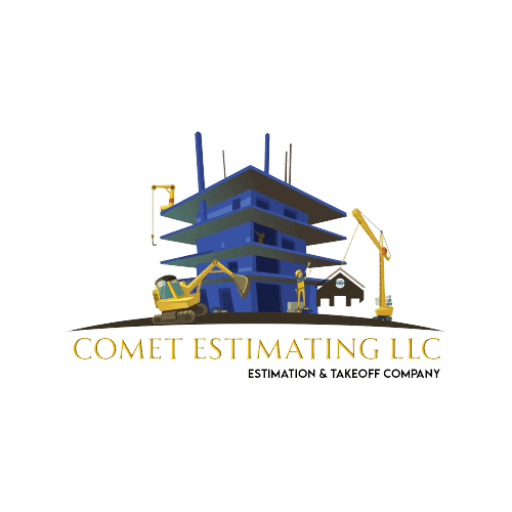Mechanical takeoff services are essential for ensuring accurate cost estimation in the construction industry. These services helps the contractor and project to budgeted their project and to keep it on track with time and cost. Through sophisticated estimating methods, practitioners will be able to disaggregate direct expenses such as labor, equipment and materials and indirect expenses such as overheads and profit margin. First, proper cost estimation is of importance in the successful completion of a construction project when there are time and budget constraints. Mechanical estimates the unaccounted elements of the project, reducing risks, cost control, and profitability of the project in the entire cycle of the project.
What is Mechanical Cost Estimating and Why Is It Crucial to Construction Projects?
Mechanical cost estimating or Mechanical takeoff services can be defined as estimation of the cost of a mechanical system (construction project). These involve installation cost, equipment cost labor costs, and materials that are required to finish mechanical systems such as HVAC systems. The success of the construction project in New York would not easily be attained without accurate cost estimates owing to the magnitude and complexity of most building projects in the area.
Proper cost estimating will make the project remain within its project budget and within the time set. The cost forecasting assists the project managers to plan against any contingency costs and make the adjustments on the budget. Lack of a reliable estimate means that the construction project may exceed its budget which is a recipe of delay and compromised quality.
The Best Cost Estimation Methods in Mechanical Construction Projects
Many cost estimation methods to use in construction industry exist. Each method as its pros and cons so its depends on the project to choose the best framework. One of the most accurate methods is the bottom-up estimation method where individual tasks/resources are estimated carefully and then the costs are summed up to produce a final estimate. The method is time consuming, but it supplies high details, which is significant in estimating accuracies.
The comparable estimation method uses information on previous projects regarding the same. Where you have finished a project, which has the same project scope and requirements, you may refer to the costs spent in the old project. This is a faster method as compared to bottom up estimation; however, this might not be as accurate. Alternate methods such as three-point estimation, parametric estimation and top-down estimating have lesser or greater accuracy and efficacy. These procedures allow a trade-off between speed and detail so that you can come up with a cost estimate that serves the demands of the construction project.
How to do Mechanical Estimation Accurately: A Step-by-Step Process
To accurately mechanical estimating services, follow a structured approach. Begin with cost data collection pertinent to the project that includes material cost price, labor cost, and equipment cost. Divide the project into work packages in order to facilitate it. Both the works packages will have definite number of specific tasks, and the cost of each task can be estimated separately.
When all the data is gathered, you should use proper cost estimation methods. Determine the use of bottom-up estimating, analogous estimation, etc., depending on the size and complexity of your project. Lastly, make sure to go back and review your estimate since it should take into consideration all direct and indirect costs like labor costs overhead costs and equipment oil costs. Through good cost analysis you are able to develop a valid and legitimate cost estimate.
The Notable Aspects to Note When Estimating Mechanical Costs
Estimating the mechanical costs entails several important factors which must be put into consideration in order to come up with a precise estimate. These comprise wages and assembly expenses that can form a big chunk of the overall budget. New York is a high-labor rate variation state mainly due to union requirements and also the location of the project. Make sure that you are equipped with the updated information of labor costs in your particular project location.
The other consideration is the overheads and profit margins. Other costs involved are project management costs, insurance and other operational expenses that can be incurred by a company performing the construction project rather than construction itself. Unforeseen outlays also need to be planned since making cost estimates is a compulsory role in the estimating process. This involves having considerations of the possible rises and falls in price, and possibility of unintended delays in the project.
The Way to Obtain Dependable Cost Information to Facilitate Trustworthy Estimations
Costs data are important in sound construction of costs. Correct data will mean that you get your estimate in line with the prevailing factors in the market. On materials, you can tap the market on potential prices of suppliers and on labor, the local wage rates must be sought together with the union contracts. It is also possible that you may choose to refer to past projects of similar proportion to learn the cost trend and variability.
It can also be useful to collect cost information by using estimating tools and software. Most accounting software today lets you enter past data, comparing cost to inflation adjustments and sometimes even taking account of regional cost differences. This will guarantee your estimates become strong, well made and current with the market conditions.
How to Do a Detailed Takeoff of Mechanical Costs
The activity of gauging and accounting up of materials which may be utilized by a project is a takeoff. In the case of mechanical estimating, this is performing the calculations on number of such items as pipes, ducts, and HVAC units. Detailed takeoff helps to guarantee that all materials are covered and this facilitates a better estimation.
The process can be considerably more efficient when digital takeoff tools are used. The plan to get offsets quickly on blueprints utilizes software such as Plan Swift, which saves time and minimizes the possibility of errors. Proper take-offs would guarantee that it is a precise measurement that can be used in estimating costs and that cost of the materials being used is not under quoted.
Checking and Fine Tuning Your Mechanical Cost Estimate to be correct
After preparing your mechanical takeoff service, you should then read it well. Make sure you have not left big costs out or missed any opportunities to save. It is possible that in some cases, the scope can change or extra problems can pop up in the middle of the project, so it is necessary to alter the estimate.
When you notice anything hindering or that can be improved, revise the estimate. It is common to adjust the costs either with new information arriving or when new constraints on the project befall the project. Always make sure that you keep your estimate flexible enough to enable changes or adjustments, but precise enough that you do not run into budget tracking problems later during the project.
Mechanical Project- Best Contractor Cost Estimator Software
The cost estimating process can be made simple through the right contractor cost estimator software. Tech solutions, such as ProEst, Builder trend, and Plan Swift, assist mechanical companies in New York enhance estimates accuracy and estimating velocity. You can import data, develop detailed estimates, monitor the costs of the projects in real time in these programs.
Certain software varies too also have templates related to mechanical systems and can provide easier cost estimates on HVAC, plumbing and other mechanical systems. With estimating tools incorporated with your project management solution you can be sure that all details are finally considered including labor and material costs.
Rounding Off Your Mechanical Cost Estimate and Getting to the Next: Design
The third step is the finalization of an estimate after reviewing and making adjustment to it. Make sure to include all information that is needed and that the estimate features the scope of the project. Then, after confirmation of the estimate, it can be presented to the stakeholders and clients, as well as subcontractors.
At this point, one should be ready to the following steps of the project such as contracts acquisition, supplier’s choice and planning. Project management starts with the critical preparation of a well-detailed mechanical estimating services which will enable you to be in charge of the budget and the schedule of the project.
Overlooked factors in Mechanical Cost Estimates
The task of mechanical estimating is not simple, and it is possible to find out some of the general traps that may cause wrong estimations. It is one of the most common errors to not include indirect costs calculation, including project overheads and administrative costs, as well as insurance. These may impose a lot of costs which can be ignored in the process of estimating.
Underestimation of the costs of labor or fuel costs of equipment is another trap. In New York, labor rates and material costs can fluctuate considerably so it is important to make sure you have current cost information. Finally, using historical data and not correcting it according to the prevailing market conditions may create false costs estimates. In the task of giving estimates make sure to use the very best, and latest, information possible.
In conclusion, the mechanical takeoff service holds the key role in the whole project With the help of proper cost estimation techniques and tools like bottom-up estimation or parametric estimation, with adequate cost data, you are in a position to make valid cost estimates keeping your project on track and fitting into the budget limits. Try to avoid some of the pitfalls, utilize the highest quality software, and keep in mind that it is important to review and revise your estimates periodically to guarantee that you have the most successful project possible. These strategies will make you extremely capable in operating the New York complexities of mechanical cost estimating.




